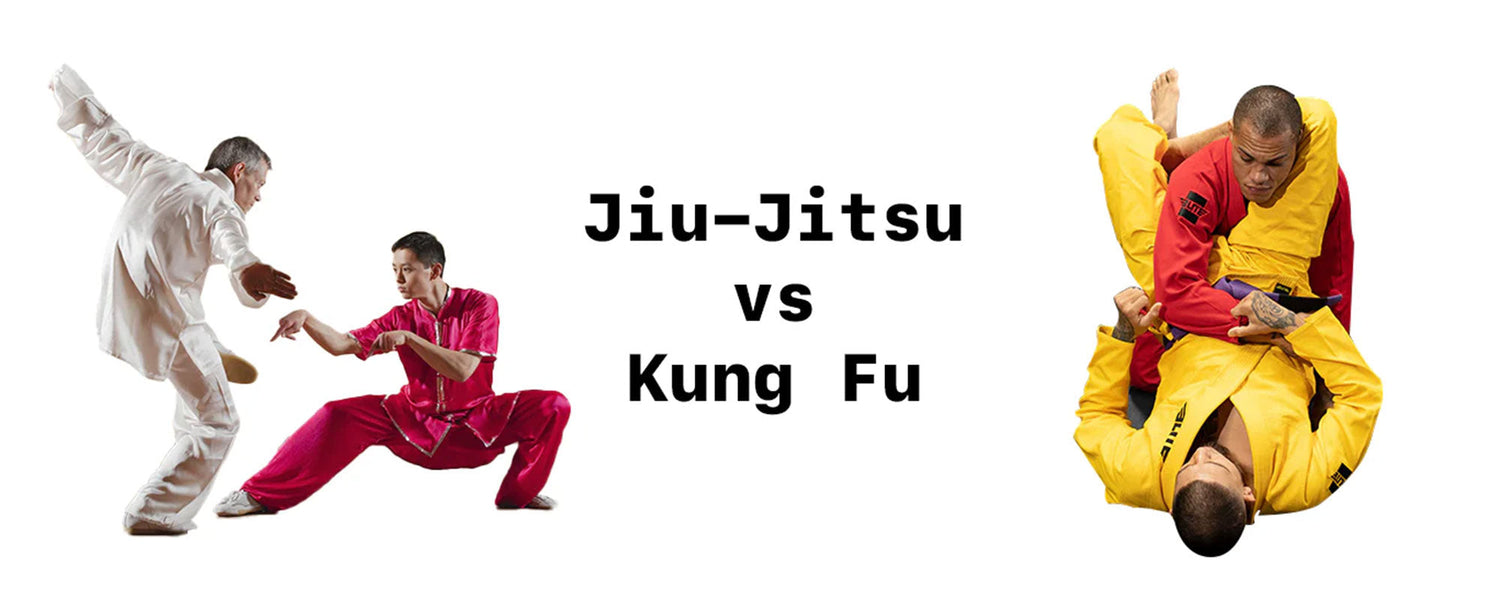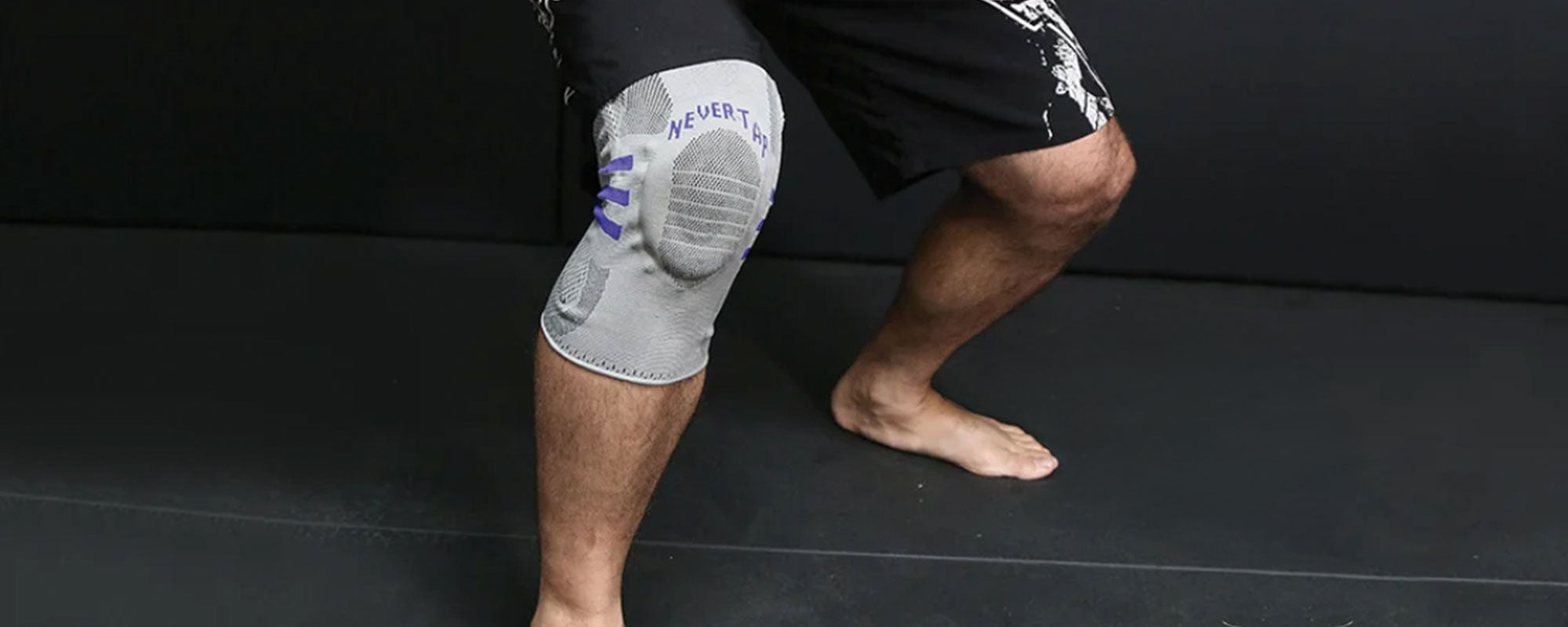Table of content
Both jiu-jitsu and kung fu are very popular yet different martial arts. They are both some of the earliest martial arts that are still practiced today. Both help practitioners with physical conditioning, strength development, and awareness, but each one has its own unique advantages. People from around the world study one or both of these martial arts to stay in shape and learn self-defense.
1. What is Jiu-Jitsu?
Jiu-jitsu is a grappling martial art that focuses on takedowns and ground fighting, drawing inspiration from Japanese judo, and was developed in the early 1900s by Kano Jigoro. Judo was a form of wrestling that focused on throwing and pinning an opponent to the ground. This evolved into a martial art that focused on grappling (using holds on an opponent to maintain a dominant position) and submissions (using aching joint locks or choke hold to prevent your opponent from escaping). Jiu-jitsu is a grappling martial art that relies mainly on grappling and submissions. Over time, jiu-jitsu became the best martial art for self defense.
A key benefit of jiu-jitsu is that a JJ fighter of any size or agecan successfuly compete and win against larger and stronger opponent, if you have mastery over movements, positions and submissions. Jiu-jitsu is a reliable martial art despite striking, punches, and kicks being forbidden. The most well-known form of jiu-jitsu is Brazilian Jiu-Jitsu (BJJ).
2. What is Kung Fu?
Kung fu is a broad term that describes any martial art that was developed in China. There are over 100 different martial art styles that fall under the category of kung fu, such as wushu and tai chi. Every type of kung fu share a few common traits, such as the use of weapons, focus on self-defense, and the practice of qigong (a type of meditation). Kung fu names its different fighting styles based on animals dragon, horse snake, etc. This is because kung fu stances and, movements mimic that of animals.
Wing chun and tai chi are aspects of kung fu that are unfortunately ineffective in real-life situations. Kung fu tends to be most useful when used defensively when grappling an opponent.
3. Jiu-Jitsu vs Kung Fu: Comparing the Two Martial Arts
3.1. How are Jiu-Jitsu and Kung Fu Different?
Jiu-jitsu and kung fu differ in their methods when it comes to fighting. Jiu-jitsu is about taking your rival down onto the mat and subduing them with joint locks or strangleholds. Jiu-jitsu is used more as a form of self-defense rather than as a sport.
Kung fu covers a broad category of many different Chinese martial arts. Unlike jiu-jitsu, kung fu is more focused on weapons and fighting from a distance. The roots of kung fu stem from Chinese culture and philosophy. The older form of tae kwon do is strikingly similar to contemporary kung fu techniques and practices.
3.2. Why Train in Jiu-Jitsu or Kung Fu?
Both jiu-jitsu and kung fu have their strengths and weaknesses, making them useful in certain situations. Jiu-jitsu borrows aspects of judo techniques, including throws, takedowns, and submissions to cause minimum injury. Jiu-jitsu helps practitioners stay healthy, flexible, strong, build up endurance, and burn excess calories during workouts.
Jiu-jitsu teaches upper body movements and how to maintain control over an opponent. Kung fu can help build confidence, as well as improve physical strength, and mental toughness. Kung fu improves stamina, agility, and speed which complements the many fighting styles it encompasses. Learning how to do kung fu techniques will improve your health, self-defense discipline, and focus. Kung fu is considered a part of Chinese culture due to the profound effect martial art has had on the country’s history.
3.3. Which Martial Art Should You Train In?
If you are looking for a martial art that focuses on grappling and submissions, then jiu-jitsu is the better choice. If you are more interested in a martial art that emphasizes fighting from a distance, then kung fu is the better choice.
Your physical strength can be improved with appropriate grappling or wrestling training. Jiu-jitsu encourages you to handle challenges and commit to your goals even when you are feeling discouraged. Jiu-jitsu can help improve your mental health by incorporating body movements that enhance calmness, focus, and flexibility.
Kung fu is a martial art that can help improve your mental and physical health, as well as being a reliable means of self-defense. Training programs in kung fu have several stages and styles that can suit the preferences of different practitioners. Kung fu includes workouts that improve mental health, physical strength, conditioning, and flexibility.
4. Why is Jiu-Jitsu Better Than Kung Fu?
Kung fu is a popular martial art, however, jiu-jitsu has more media exposure and mainstream recognition around the world because of its practical implications and relatively safe rules. Jiu-jitsu focuses on a variety of quick techniques that can surprise and subdue even a larger opponent more effectively than punches and kicks.
5. Differences Between Jiu-Jitsu and Kung Fu?
Jiu-jitsu has a wide range of styles and versatile techniques while kung fu has variations of arm and leg strikes often compared to the movements of animals. Jiu-jitsu involves full-body movements, joint strikes, and chokes that give fighters the full maneuverability to execute grapples, escapes, and transition from weak to advantageous positions. Other key differences between jiu-jitsu and kung fu are discussed below. While kung fu is influenced by the religious and traditional philosophies of China. The term kung fu describes the ordeal and dedication involved in the process of obtaining a skill. It also refers to the journey of personal and spiritual growth. Kung fu is a real street fighting martial art and teaches the combination of palm strikes, punches, elbow strikes, low and high kicks, hammer fists, and many more. Furthermore, kung fu has many styles and diversities. It teaches one of the best self-defense and striking techniques. These qualities make kung fu unique and different from jiu-jitsu, But both have their effectiveness and applications under different circumstances.
5.1. Uniform Differences
The standard jiu-jitsu uniform consists of a robe tied with a colored belt called a gi. The gi is usually made of tough material so it is difficult to tear. There are different types of gis, for beginners, the gi is made of ripstop material. There is a lightweight gi and a competition gi which is made for tournament fights One important thing, the color of the gi has nothing to do with the level of fighter. Jiu-jitsu fighters can compete in a no gi competition. In which the fighters wear grappling shorts and a rash guard. Kung fu attire consists of a jacket, trouser, and belt. The kung fu outfit is loose fitting, the jacket has a central opening and short sleeves while the trousers are longer than normal trouser. However, kung fu uniforms are more lavish, normally made out of colored cotton or silk. Kung Fu uniforms have buttons and ornately embroidered knot clasps.
5.2. Physical Fitness Development
Training in jiu-jitsu can help you acquire a physically fit body through intense workouts. A standard jiu-jitsu workout consists of warm-ups, practicing techniques, and repetitions that have improved your muscle memory and response time. Jiu-jitsu fighters spend several hours doing moderate to intense training sessions on the mat, resulting in excess calories being burned and improving physical fitness.
Kung fu is more focused on the precision and philosophical aspect of kung fu teaching. It enhances kicks, punches flexibility, and embed strength. Kung fu helps you develop mental toughness and emotional stability. It increases blood circulation, enhances concentration, and teaches a sense of community. As you train in kung fu, you learn to use energy efficiently and undergo endurance training.
5.3. Form of Self-Defense
Jiu-jitsu is a grappling art that uses leverage to control your opponent’s movements and is an effective way to resolve violent situations with minimal injury. You learn to be more aware of the danger and better assess possibly hostile situations. As you progress in jiu-jitsu, you gain the confidence to confront an opponent and learn how to use jiu-jitsu as a means of self-defense.
Kung fu primarily focuses on striking by delivering devastating blows to specific areas. Kung fu is a martial art that relies on speed to achieve victory. Kung fu can be fought at a distance, striking at weak points to damage your opponent. However, striking while standing can be tough as it leaves you vulnerable to unorthodox fighting styles. Kung fu is a reliable form of self-defense since you can stay mobile and gauge the distance between you and an assailant.
6. Should You Learn Kung Fu or Jiu-Jitsu?
Both jiu-jitsu and kung fu have been utilized in competitions, on the street, during training, and throughout history. Training in kung fu not only teaches you how to fight, but also has a greater appreciation for spirituality, philosophy, and ideology. In kung fu, combat involves non-linear strikes with your arms and legs, thinking quickly when reacting to an opponent’s moves. It is best for a distance fight in which you have to subdue an opponent in a standing bout just like MMA style because kung fu involves fists, elbows, knees, and legs. You have all the limbs ready and prepared to engage to win a fight.
Jiu-jitsu training requires learning several techniques and positions based on grappling and submission techniques. In MMA jiu-jitsu is considered an essential ground combat technique. It is best for close-range fights in which grappling, chokes, and joint locks are involved. Jiu-jitsu is a full-contact sport that pays large cash prizes to athletes who participate in professional tournaments.
6.1. Suitable Training
Training any martial art is suited to a large range of sports. Sometimes an athlete needs to understand the body discipline to absorb the right amount of training. Jiu-Jitsu and Kung Fu both are martial arts that entirely rely on grappling or striking techniques respectively. The mesomorph (refer to a body type with a high muscle-to-fat ratio) body structure works well with the striking. If you have a mesomorph body then Kung Fu might be a suitable training option for you.
Training with the Ectomorph (refer to a body that has a slim and thin body structure) body easily tackle the Jiu-Jitsu styles, although there is no scientific restriction for any body type. Jiu-Jitsu is renowned for its quality that any body structure can master the Jiu-Jitsu because its practices are not entirely focused on body strength but on techniques, movements, and positions.
7. Takeaways
- Martial arts are an excellent place to meet disciplined people and learn useful life skills while staying in shape.
- By choosing the right martial art, you’ll not only get all the physical benefits of exercising, but you’ll also get the chance to build up your confidence and learn skills that could potentially save your life in a dangerous situation.
- If you are looking for a martial art that focuses on grappling and submissions, then jiu-jitsu is the better choice.
- If you are more interested in a martial art that emphasizes fighting from a distance, then kung fu is the better choice.
Photo Credit: @westend61












Leave a comment
This site is protected by hCaptcha and the hCaptcha Privacy Policy and Terms of Service apply.